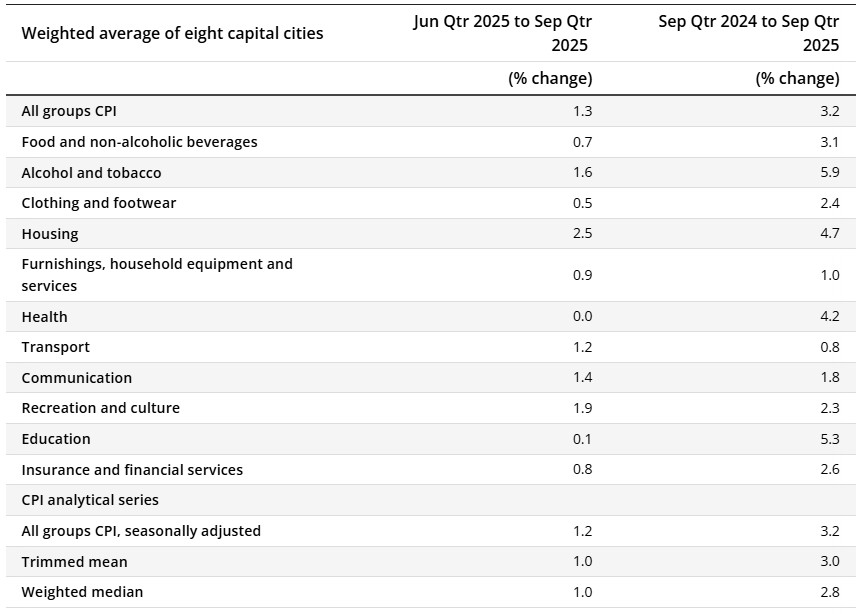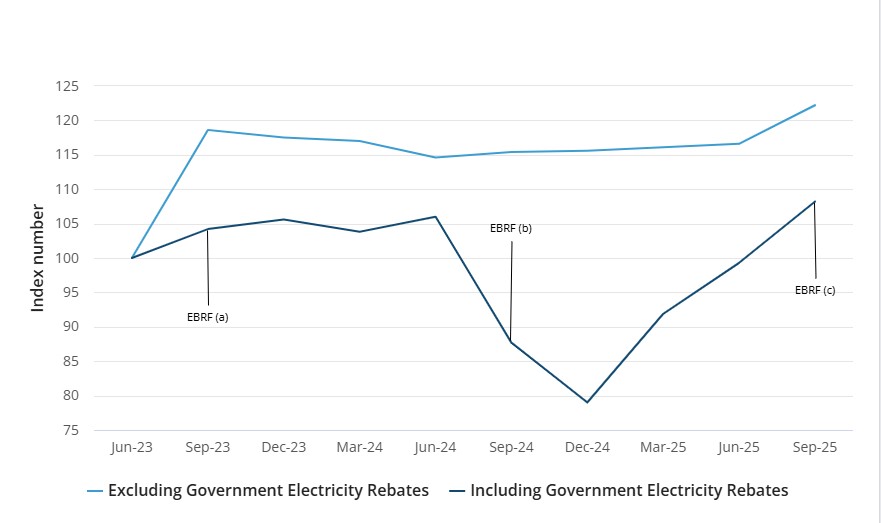Financial Advisers across Australia
New to Investing

Investing in stocks
Morgans is dedicated to providing tailored stockbroking and wealth management services to investors. Our expert financial advisers understand the importance of personalised investment strategies and will work closely with you to create a customised portfolio that aligns with your specific investment goals and risk tolerance.
With access to award-winning research and exclusive investment opportunities through our corporate finance team, Morgans empowers you to make informed decisions that may help you maximise your potential in the stock market.

Building your wealth
Morgans offers a personal and proactive approach to managing your wealth, tailoring solutions to achieve your financial goals.
Our experienced advisers take the time to get to know you, understand your ambitions and create unique solutions for every stage of your life. We have a diverse range of products and services to suit your approach to investment.
We can help you through customised wealth management plans, addressing financial structuring, tax optimisation, risk management, and portfolio monitoring - all aligned with your lifestyle objectives.

Preparing for retirement
Morgans specialises in comprehensive retirement planning, providing personalised strategies for wealth accumulation and management. Our expert advisers navigate investment decisions, risk mitigation, and tailored financial solutions to ensure a secure and fulfilling retirement. We can help guide you in structuring retirement income from diverse sources, including superannuation, non-superannuation assets, and Centrelink benefits, optimising your financial well-being.

Optimising your investments
Our in-house, award-winning analysts bring extensive industry experience, providing invaluable market and company insights. Covering diverse facets of the Australian market, our research team delivers prompt, precise investment ideas. As a client you have access to our comprehensive research reports on more than 200 ASX-listed companies, accompanied by regular market updates to ensure you stay well-informed about the latest developments. Our evaluations of individual companies encompass fundamental value, management quality, earnings, and growth prospects.

Morgans in the community
Since 2005, the Morgans Foundation has partnered with local branches to support Australian charities raising over $19m.
Furthermore, our annual charity day Big Dry Friday, which launched in 2018, has raised over $9.6m to support rural and regional communities in education, mental health and disaster relief.

Why choose Morgans?
Our advice has earnt our clients’ trust for over 40 years, growing wealth and Australian companies. In turn, we’ve grown to become one of Australia’s largest, full-service stockbroking and wealth management networks. With over 500 advisers and 56 locations across Australia, we offer tailored financial advice to reach your goals, and build partnerships that last decades.
News & insights
Last time I spoke to you about Australian inflation and its effect on what the RBA might do in its November meeting, I said that expectations for inflation for the year to September, which would be published in October, were between 2.5% and 2.7%. I also said that if inflation came in at the lower estimate of 2.5%, then we could see a rate cut in November.
Well, the numbers are out, and unfortunately, not only are we not getting a rate cut in November, it’s unlikely we’ll see another rate cut any time soon. In fact, it’s fair to say we may be at the very end of the rate-cutting cycle in Australia. The reason is that the core measure, the trimmed mean, which is the RBA’s preferred measure of underlying inflation, came in not at 2.5%, not at 2.6%, and not even at 2.7%, but at a shockingly high 3%.
This result was driven by a 1.3% increase in prices in the previous quarter, which annualises to about 5%, a surprise that wasn’t anticipated. Looking deeper into the quarterly CPI, we saw housing prices rising at 4.7%, health costs up 4.2%, and education costs increasing by 5.3%.

The ABS has indicated that the major source of inflation was a jump in goods inflation, which rose 3%, up 1.1% from the previous quarter, or 4.4% annualised. The standout contributor was electricity, which saw a massive year-on-year increase of 23.6%. Other household fuels actually fell by 1.6%, and annual services inflation was 3.5%.
The ABS attributed this unexpected rise in inflation primarily to electricity prices. But it’s not just electricity prices themselves, it’s the end of Federal Government funding to the states that had been keeping those prices low.
The ABS reported that electricity prices rose 23.6% over the past 12 months, largely because State Government rebates, funded by the Commonwealth under the Energy Bill Relief Fund, have now been used up. These rebates included Queensland’s $1,000 rebate, Western Australia’s $400 rebate, and Tasmania’s $250 rebate. With these rebates exhausted, electricity prices have surged.

The A
BS data shows electricity prices excluding government rebates, and highlights the impact of the federal funding. Electricity prices really took off in 2023, rising by almost 20%, which posed a political risk for the Federal Government. In response, the Government provided funding to State Governments to suppress those prices. There were schemes in both 2023 and 2024, and ahead of the last election, the subsidised price paid by consumers dropped to around 80% of the original cost, well below the actual cost of generation.
However, since December 2024, those subsidies have been reduced. Over the past year, prices have climbed again, though they remain below the unsubsidised cost, which is now around 122% of the original price, or about a quarter higher than where things stood in 2023.
The result of all this is 3% core inflation. If inflation had come in at 2.5%, rates could have fallen from 3.6% to 3.35%. But with 3% core inflation, rates should need to rise by 25 basis points. That said, we’re likely at the end of the rate-cut cycle.
Is the RBA likely to raise rates? They might consider it, but this is cost-push inflation, not demand-driven inflation, so increasing rates wouldn’t help. It would only worsen the situation. This very high inflation figure, driven by the end of federal electricity subsidies, signals the end of the current series of Australian rate cuts.
Key Takeaways
- Press pause. Park funds safely while you confirm what you received, obligations, and any tax implications.
- Build a plan that fits your goals and timeframes. Prioritise cash buffers, debt decisions, investing, super, and estate wishes.
- Get advice early. A financial adviser and tax accountant can help you avoid costly mistakes and set up a long-term strategy.
- Use professional inheritance financial advice to align tax, super, investing, and estate planning decisions.
Receiving a large inheritance can be life-changing. It can also feel overwhelming. The right first steps help you protect capital, make clear decisions, and turn a windfall into lasting financial security. This guide walks you through a practical process Morgans advisers use with clients every day, with a focus on inheritance financial advice tailored to Australian rules.
Step 1: Pause and assess your situation
Before making big choices, slow down.
- List the assets you have inherited: cash, property, superannuation, shares, term deposits, insurance proceeds, or a business interest.
- Confirm control and timing. Has probate been granted? Are there executor timelines or sale constraints?
- Check any liabilities. Some assets may come with debts, fees, rates, or ongoing costs.
- Gather documents. Will, probate, estate distribution statement, title records, super death-benefit statements, cost-base records for property and shares.
Short term, consider holding funds in high-interest savings or term deposits while you complete the groundwork. ASIC’s Moneysmart has clear tips on handling large amounts of money.
Step 2: Understand the emotional impact
An inheritance often follows the loss of a loved one. It is normal to feel pressure to act quickly. Give yourself time.
- Avoid large purchases until you have a plan.
- Set simple rules. For example, no irreversible decisions for 30 to 90 days.
- Write down your goals and values. What will this money do for you, your family, or future generations?
- If you feel rushed by offers or schemes, step back and check for red flags. Scamwatch has practical guidance.
Step 3: Map your goals and timeframes
Your strategy should mirror when you will need the money.
- 0 to 2 years (short term): capital protection and liquidity. Cash, term deposits, or an offset account.
- 3 to 7 years (medium term): a diversified mix of income and growth.
- 7 years plus (long term): growth-focused assets with disciplined risk management.
Align each dollar with a job: emergency fund, debt choices, home or investment property plans, children’s education, retirement savings, or charitable giving.
Step 4: Tax and rules to consider
Australia has no inheritance or estate tax. You can still face tax on income or gains from inherited assets. Seek written advice before selling or restructuring.
- Property. Capital Gains Tax (CGT) can apply when you sell. A main-residence exemption may be available in some cases and there is a two-year timing rule, with possible extensions in limited circumstances. The ATO has more information on extensions to the 2-year ownership period.
- Shares and managed funds. You usually inherit the deceased’s cost base. Future gains or income may be taxable in your hands.
- Superannuation death benefits. Tax depends on your relationship to the deceased and the components of the benefit. ATO guidance explains who counts as a dependant and how tax is applied.
- Pension and benefits. A large inheritance can affect Centrelink assessments under the income and assets tests. Check how your position may change.
Step 5: Build a financial strategy
This is where professional inheritance financial advice makes a clear difference. A tailored strategy can help you:
- Preserve capital while generating reliable income.
- Create an optimised tax position.
- Invest based on your risk profile and timeframes.
- Plan for retirement or intergenerational goals.
Common strategies include:
- Diversified portfolios. Combine cash, fixed income, Australian and global shares, property, and alternatives.
- Superannuation contributions. Use concessional and non-concessional contributions where appropriate, subject to caps and personal circumstances.
- Debt reduction or offset use. Compare the after-tax, after-fee return from investing with the guaranteed saving from reducing non-deductible debt.
- Property investment. Weigh cash flow, rates, maintenance, tenancy risk, and diversification.
- Philanthropy. Structured giving can align with your values and tax planning.
Step 6: Make considered debt decisions
A lump sum tempts quick mortgage paydowns or new borrowing. Test options with advice.
- Offset first. Parking cash in an offset account can cut interest while keeping flexibility.
- Compare outcomes. Paying down non-deductible debt is often strong, but do not drain all liquidity.
- Avoid new lifestyle debt. Large purchases can wait until your plan is set.
Step 7: Invest with discipline
Good portfolios are simple, diversified, and low friction.
- Use broad market building blocks supported by high-quality research.
- Keep fees and taxes in focus.
- Rebalance periodically to maintain your risk level.
- Document an investment policy statement you can stick to when markets move.
Step 8: Update your own estate plan
An inheritance is a prompt to review your legal documents.
- Update your will and enduring powers if your situation has changed.
- Review super nominations and life insurance beneficiaries.
- Consider a testamentary trust if suitable for family protection or flexibility.
Learn more about Estate Planning with a Morgans adviser.
Step 9: Avoid common mistakes
Many Australians make avoidable errors with inherited wealth, such as:
- Making large purchases without a plan
- Ignoring tax consequences when selling assets
- Failing to diversify or taking concentrated bets
- Chasing high returns promised by unlicensed operators
- Not seeking professional advice early enough
Use checklists, document your decisions, and keep a record of key statements and dates.
Step 10: Work with a Morgans financial adviser
Every inheritance is unique, and so is your financial journey. A Morgans adviser can help you:
- Clarify goals, timelines, and trade-offs
- Model debt vs invest decisions
- Design a diversified portfolio to suit your risk profile
- Coordinate with your accountant and solicitor on tax and estate matters
- Set up a review rhythm so your plan stays on track
Contact us today for a free consultation with a Morgans adviser. Let us help you turn your inheritance into long-term financial security.
Learn more with our superannuation advice, financial planning, retirement and estate planning.
Frequently asked questions
1) Do I pay tax on inherited money in Australia?
There is no inheritance or estate tax. You may still pay tax on income or gains from inherited assets. CGT can apply if you sell property or shares you inherited. Tax may apply to some superannuation death-benefit payments depending on your relationship to the deceased and the components of the benefit.
2) Should I pay off my home loan or invest the inheritance?
It depends on interest rates, risk tolerance, cash flow, and timeframes. Many clients park funds in an offset account first, then decide with advice. Compare the saving from reducing non-deductible debt with the expected after-tax return from investing. A written plan helps you commit to the path you choose.
3) What if I inherit a house?
Decide whether to live in it, rent it, or sell. Each option has different tax, cost, and lifestyle impacts. Keep records of valuations, costs, and dates. Speak to your adviser and tax specialist before you sign a contract. ATO guidance covers CGT rules and timing, including the two-year rule and limited extension grounds.
4) Who should I talk to first?
Start with a licensed financial adviser and a tax accountant. If property or complex structures are involved, engage a solicitor. Your financial adviser can coordinate the team and build a step-by-step plan.
Beware the US Shutdown!
Beginning on the 1st of October 2025, the US government began its current Federal government shutdown.
The shutdown occurred because Democratic Party Senators refused to support a Continuing Resolution to provide funding for the US government. At the time of writing, Republican Senators have now put up Continuing Resolutions for funding to the Senate 11 times, and Democrat Senators have refused to support them 11 times.
The more I look at this shutdown, the more it is apparent that Democratic planning for the shutdown really began in July, following the passage of the One Big Beautiful Bill.
A good start to understanding the Democratic Party’s decisions can be gained by reading a paper published on 22 July by University of California Berkeley Public Health Professor William H. Dow. The paper is titled “What do looming cuts to Medicaid really mean?”
Although the article is about Medicaid, Dow briefly mentions the expiry of subsidies to the Affordable Care Act (Obamacare insurance). Dow downplays this as a cause of the shutdown. We cover this issue in an appendix.
Berkeley is particularly interesting because it's in California’s 12th Congressional District. This was one of the long-time districts held by Nancy Pelosi, who resigned as Speaker of the House at the beginning of 2023. So it's really Democratic Party heartland.
In this paper, Professor Dow argued that the One Big Beautiful Bill signed into law by Trump on the 4th of July 2025 cuts funding to Medicaid by $100 billion per year. The source document he uses was published by the Kaiser Family Foundation.
When I looked at the source document, it actually says $99 billion per year. Dow rounded it up. We'll draw some analysis from that source document later. For now, we’ll say the cut is $99 billion a year, over the next ten years, continuously.
Medicaid is intended to provide basic health care for the poor. It’s funded by the federal government, but services are provided at the state level. In every state, the agency has a different name. The Congressional Budget Office tells us that in 2023, the total cost of Medicaid was $870 billion.
That means spending on Medicaid is equal to or greater than the GDP of around 170 countries. Only about 20 countries have a larger GDP than the annual US spending on Medicaid.
When we look at that spending, American seniors and disabled people were 21% of enrollees but accounted for 52% of the spending. Children were 37% of enrollees but only 15% of the spending. Professor Dow’s paper shows that Medicaid is important, particularly for understanding the politics around what he calls “Undocumented Immigrants.”
We’ll talk later about Speaker of the House Mike Johnson’s discussion of the same group. He calls them “Illegal Aliens.”
This is interesting. I’ve seen polling about the use of these terms. Roughly twice as many Americans use the phrase “illegal aliens” as use “undocumented immigrant”. But “undocumented immigrant” is heavily used in Democratic Party heartland, especially in California, where Professor Dow is based, and in New York State.
Again, Medicaid is intended to provide basic health care for the poor. The program is federally funded but state-administered. Speaker Mike Johnson, speaking on the 1st of October, said that “Medicaid was intended for people in distress, young pregnant women or men who were down on their luck, the destitute and disabled, and the elderly.”
The sources of the savings in Medicaid spending when the bill was passed on the 4th of July came from two areas: identification of recipients as American citizens, and the use of a “work test”.
Republicans tried to reduce benefits to American citizens only. That’s what they’re attempting to do.
Democrats, on the other hand, would like benefits to continue to be extended, officially or unofficially, to illegal aliens or undocumented immigrants.
Let’s talk about “The identification of American citizens”.
This involves people receiving benefits, or the adults in the family, turning up once a year at the state agency and identifying themselves in person. Earlier analysis by DOGE showed a number of invalid claims in Medicaid and other federal benefits.
There were people receiving benefits who had been dead for years, and others who had yet to be born. So Republicans included a condition in the bill that recipients must turn up at the agency once a year and prove they are American citizens.
That would exclude illegal aliens from receiving payments.
There’s also a work test for people receiving medical benefits. If you’re between 19 and 64 years of age and want to receive Medicaid benefits, you must prove you’re working at least 80 hours per month or attending an educational institution for that period.
When the bill became law, it was said these provisions would reduce Medicaid spending by 15%.
Professor Dow based his paper on research from the Kaiser Family Foundation. I examined the same document. It says the reduction is $99 billion a year. As a percentage of the total $870 billion spending, that’s exactly 11.4%, not 15%.
Still, the apparent intent of the Democratic Party is to continue the shutdown until these savings are reversed.
The previous experience of a shutdown was during Trump’s first term. Trump himself shut down a spending bill until it included funding for the border wall. That shutdown lasted 35 days. The result was that Trump’s favourability ratings fell dramatically.
So I think Democrats started this shutdown assuming the same would happen again, that Trump would be blamed, and it would be a political advantage to have a long shutdown.
Unfortunately for them, recent polling by Rasmussen suggests Trump is rating well.
There was a “No Kings” national protest aimed at Trump held on the 18th of October in all 50 states. This shutdown appears to have been planned to coincide with those demonstrations.
This suggests Democrats planned this as a long-term shutdown.
So what could possibly go wrong?
First up, China is using the US shutdown to launch aggressive demands for control of world trade in return for rare earths.
From an economic point of view, a paper published by Standard & Poor’s titled “The rising risk of a prolonged shutdown” is worth noting. The previous longest shutdown was 35 days, or five weeks.
It’s quite possible this one will go longer. The paper calculates that each two weeks of shutdown reduces final quarter GDP by 0.3%. We believe the shutdown will last at least four weeks. That would reduce fourth quarter GDP growth from the current estimate of 2% annualised to 1.4%.
The long-term bond market appears to believe this. In recent weeks, 10-year bond yields have fallen by 10 basis points. I think there’s more to come.
This shutdown may continue for a while. It’s good advice to exercise caution and wait until the shutdown ends. This story still needs time to unfold.









